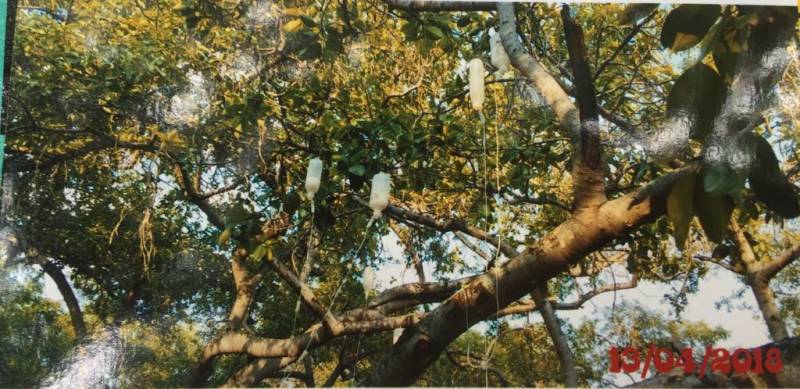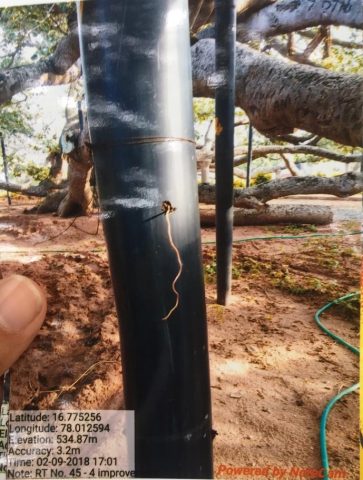Second-life for 700-year-old 'Pillalamarri' banyan tree
By Amritha Mohan
Mahbubnagar: Little shoots have begun to appear on the 700-year-old banyan tree in Pillalamarri. Prop roots, protected by pipes, are making their way to the ground, supporting the ailing tree, whose ‘saline-drip’ treatment had become worldwide news last year.

Two years back, the forest department officials in Mahbubnagar had no hopes about bringing this ficus tree back to life. Persistent termite attacks and vandalism were taking a toll on this ancient tree, that is sprawled over 4.5 acres of land. That was when Mahbubnagar collector Ronald Rose decided to take matters into his hands.
The first step taken was to ensure the tree’s survival. For that, no tourists were allowed near the tree. Ronald Rose, Mahbubnagar district collector says, “Nothing revives a tree better than leaving it alone. The state of the tree had worsened with public interference. People would climb the tree, at times break its branches and write names on it. Branches from the tree would fall off by themselves also. So, we closed it down in December 2017.”
Under the consultation of Mr Manoranjan Bhanja, a retired IFS official, attempts began to rejuvenate the tree scientifically. G. Jaganmohan, deputy range officer at Mahbubnagar forest department says, “To contain the termite and stem-borer attack, he suggested 2% (2ml in 100 l) administration of the pesticide chlorpyrifos. Initially, we sprayed it with pressurised pumps on the branches. Holes were drilled into the stem and the solution was injected, but this method was not effective. However, when we inserted the solution into the branches with the help of saline tubes, it worked. This is like a glucose-drip. Roots were also treated for termite attacks.”

The officer explained that pipes starting from the branch to the ground were installed at over 50 places to facilitate the growth of prop roots, which helped support the tree’s humongous stem. “Nutrients like red soil, coco peat and vermicompost were added into the pipe. Panchgavya, an organic fertiliser containing cow urine, was also directly sprayed to the leaves,” he said.

Since Mahbubnagar is an area notorious for its water scarcity, arrangements were made to ensure that the tree was properly hydrated. The forest authorities hired tankers from outside to water the tree consistently. “The rainfall this year was a bit better, but in the past two years, it was quite scarce. Borewells in this area had no groundwater. But this monsoon has helped improve the situation of the tree,” added Jaganmohan.
But monsoon also meant bad news for the tree, because the branches of the tree would fall off as it was unable to bear its own weight. As a solution, temporary cement pillars have been set up to support the tree.
Nevertheless, the tree has been making a steady revival with the treatment and isolation. The tree, which has turned into a mascot for Mahbubnagar district over the years, always had people visiting it en route to Bangalore or Sri Sailam, says a forest department official. Ask Ronald Rose if it will be open to the public in the near future? “Not any time soon,” he says. “For those who want to see the tree, we have built a canopy walk, in such a way that the tree is not disturbed. We cannot really afford to open it because it takes a lot of time and effort for the tree to recover,” he told NewsMeter.
